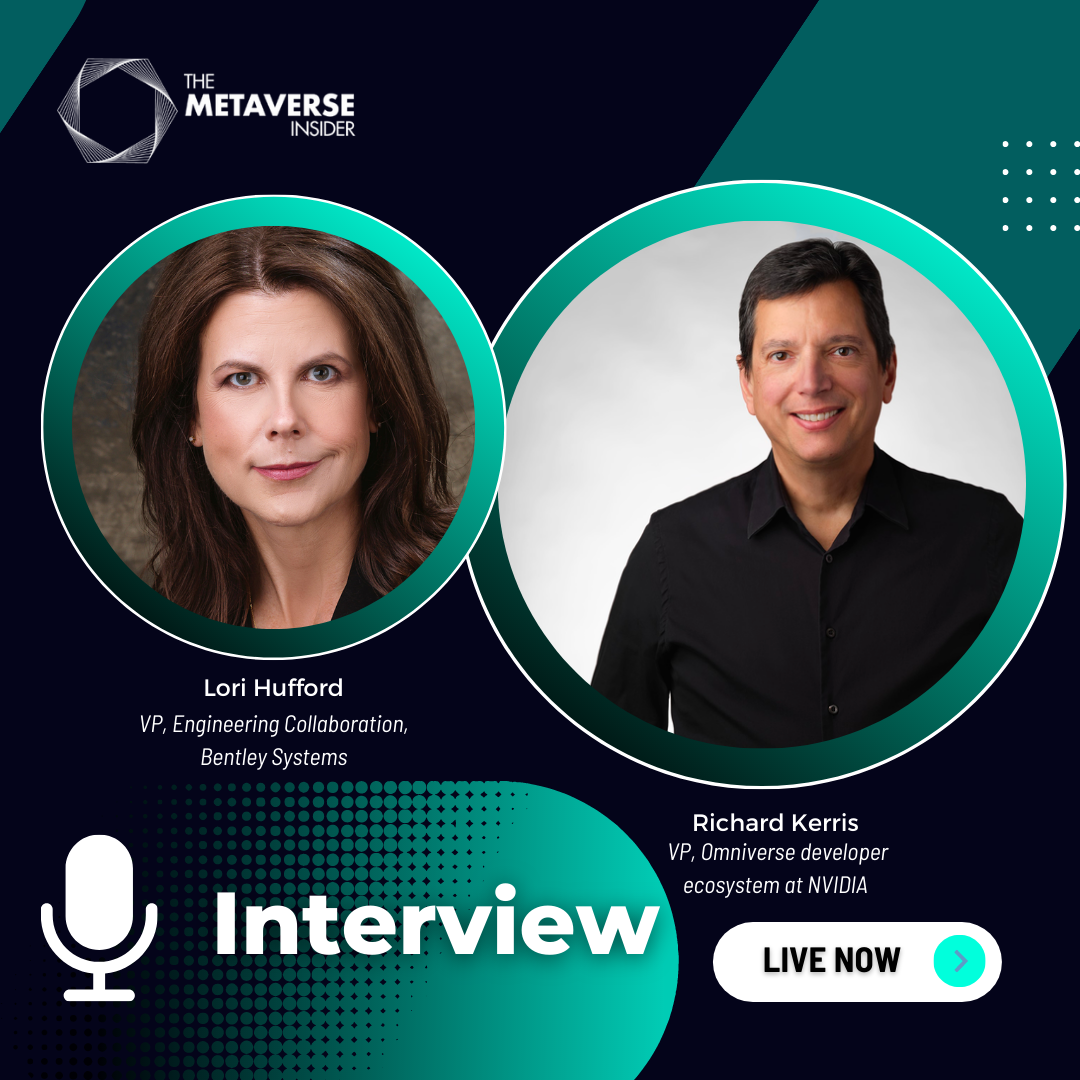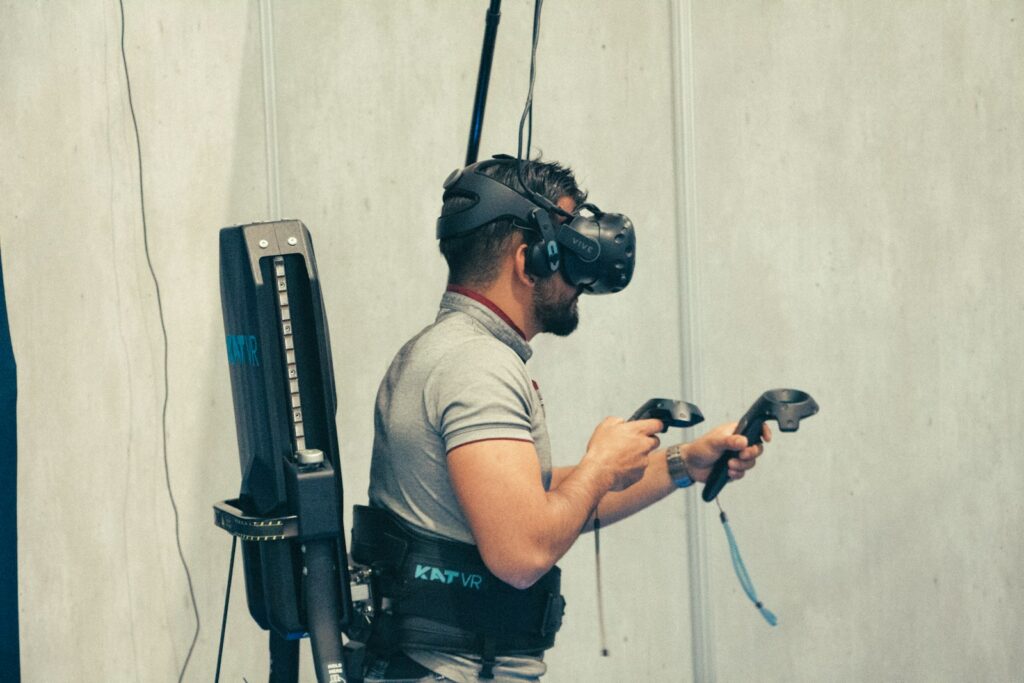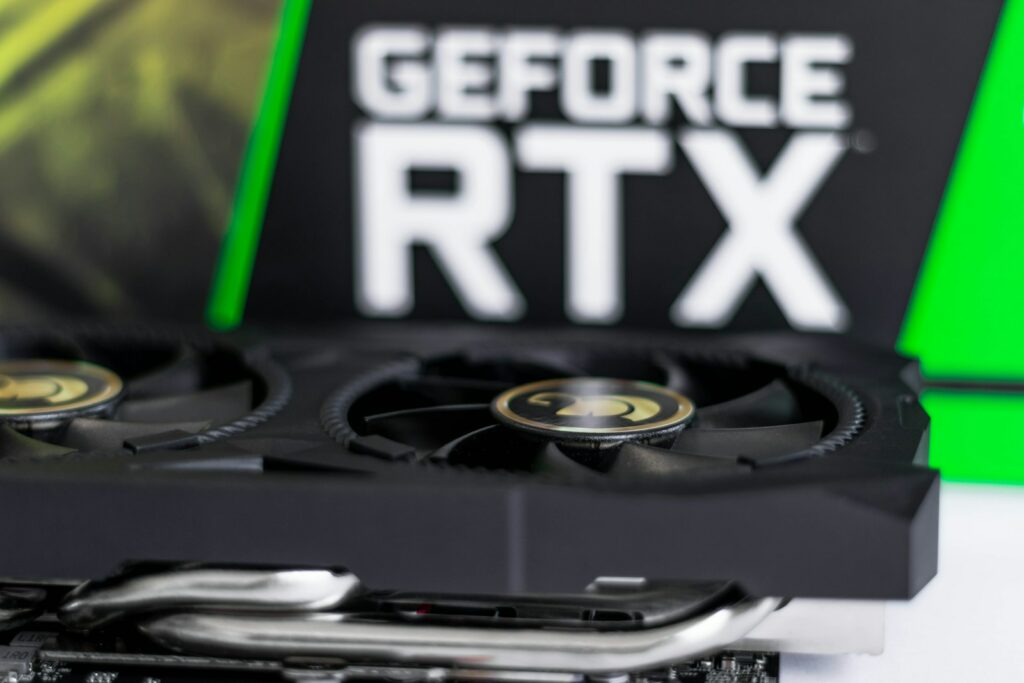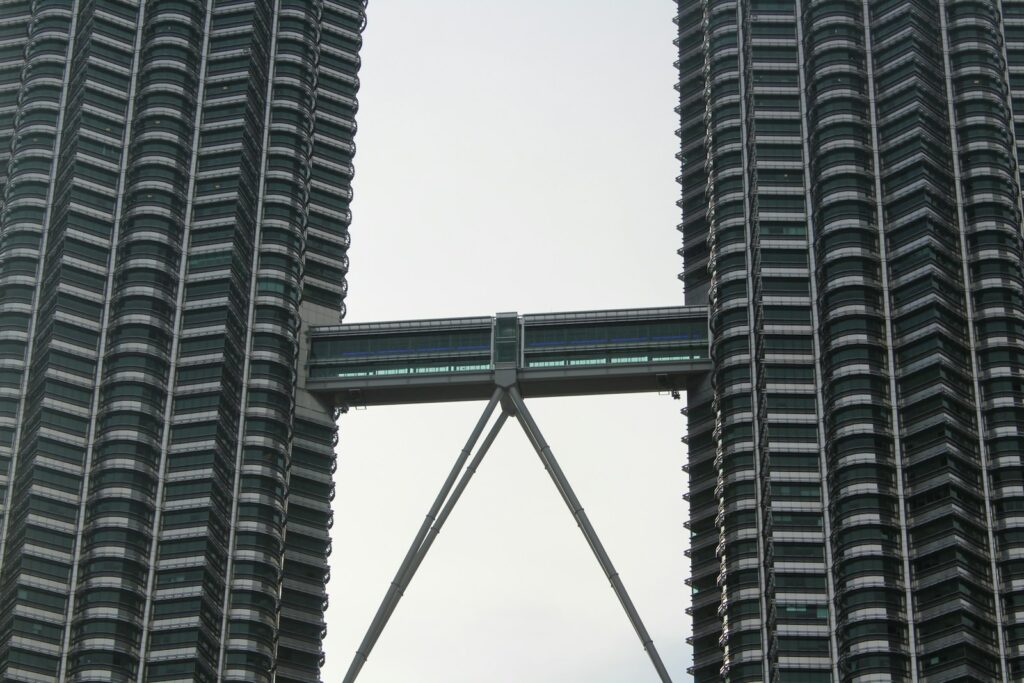The Metaverse Insider had the pleasure of interviewing both Lori Hufford and Richard Kerris, the respective VP of Engineering Collaboration at Bentley Systems, and the VP of the Omniverse developer ecosystem at NVIDIA.
Bentley Systems is a global provider of comprehensive software solutions for infrastructure advancement. Their tools empower professionals in architecture, engineering, and construction to efficiently design, construct, and maintain infrastructure assets. Meanwhile, NVIDIA is renowned for its GPUs and AI computing, driving advancements across various industries – including the industrial metaverse.
Both Bentley Systems and NVIDIA have made significant contributions to their respective domains, revolutionizing industries through their innovative software solutions and cutting-edge hardware technologies. In this interview, we delve into the exciting collaboration between two industry giants, Bentley Systems and NVIDIA. Join us as we explore the insightful perspectives of Lori and Richard, who paint a vivid picture of the future of the industrial metaverse.
Characteristics of Digital Twins in the Industrial Metaverse
The metaverse for infrastructure may not be fully realized yet, but its characteristics are taking shape. Lori discusses her perspective on the future metaverse for infrastructure – outlining the key characteristics that digital twins, or digital representations of physical infrastructure, should possess:
- Immersion: Offering a 3D geospatial user experience.
- Real-time: Enabling real-time interaction and data transmission.
- Engineering-grade: Ensuring no data loss and high fidelity in data representation.
- Always-on: Persisting data and tracking changes continuously.
- Interoperable: The content should not be limited to a single platform; openness and cross-compatibility are vital.
- Collaborative: Facilitating multi-user interaction.
A digital twin for infrastructure is a continuously updated digital representation of the physical world, enriched with Building Information Modelling (BIM) data, capable of tracking and visualizing changes. This twin also unlocks data contained within engineering files, aligning it with the infrastructure data:
“They’ve got to be immersive, a 3D geospatial user experience, they’ve got to be real-time with real-time interaction in real-time data… And of course, they have to be collaborative, empowering, multiuser interaction.”
Richard concurred with Lori’s points, expanding on the challenges facing many companies in achieving such an immersive, collaborative environment. He underscored that many companies possess siloed data, separate infrastructures, and proprietary ecosystems, which hinder their capacity to interact with other products and workflows. As a result, these companies often become stuck within their self-contained systems.
To combat this, NVIDIA has developed Omniverse, a platform designed to unify various data sources, applications, and locations:
“Omniverse is designed to unify all of those things by bringing them all together in a platform where they can work together – they can collaborate across applications and even cross locations.”
The Significance of the Partnership Between Bentley Systems and NVIDIA
The integration of NVIDIA Omniverse and Bentley AI Twin is revolutionizing the visualization and simulation of infrastructure. Lori states that this integration creates immersive 3D and 4D experiences for digital twins of infrastructure projects, powered by AI Twin:
“The combined capabilities are really delivering a whole new set of possibilities and incredible results for some of the world’s largest and most complex infrastructure projects.”
While developing their platform, Richard notes that their goal isn’t to replace existing tools, acknowledging the sophistication and experience encapsulated in these pre-existing systems. Instead, their aim is to create a cohesive platform that can connect various tools and facilitate seamless workflows across them:
“That’s something that we’ve really gained so much from our relationship with Bentley because they’re the leaders in this space. And so, we’ve been able to understand some of the nuances and the things that we must pay special attention to as we build this platform and make it a broader availability.”
$100 billion Industrial Metaverse Projections for 2030?
Given the recently published report by Siemens and MIT, which projects the industrial metaverse to reach a value of $100 billion by 2030, the Metaverse Insider was naturally intrigued to gain insights into Lori’s and Richard’s perspectives on this estimated value.
Richard responds to the projection made by Siemens and MIT of the industrial metaverse being worth 100 billion by 2030 by stating
“No, I don’t think it’s realistic at all.”
He implies this estimate might be too low, given the potential transformative impact of the metaverse and digital twin technology on businesses. He draws a comparison with the early days of the internet, when many were skeptical of its potential, only to see it fundamentally reshape the world’s largest companies.
Richard sees the metaverse as the next evolution of the web, transitioning into a 3D-centric internet that facilitates movement between virtual worlds. He anticipates that the impact will be more significant than anticipated, with digital twins being implemented across a variety of use cases, from consumer purchases like furniture and clothing to managing factories, warehouses, city blocks, and land masses.
He envisions digital twins becoming so critical in every industry that they will be as essential to businesses as websites are today. From managing small consumer items to complex systems such as understanding wildfires or the effects of climate change on a global scale, he sees a broad application of digital twins in our future.
The Future Impact of Digital Twins on the Global Economic Landscape
Richard believes that digital twins will tremendously increase efficiency and productivity, resulting in substantial cost savings. He highlights how the use of digital twins can enhance employee safety in workplaces such as warehouses and factories by virtually understanding the tasks before implementing them physically:
“There are tremendous benefits. I mean, we’ve seen companies stating that they’re seeing a 10-30% reduction in their cost by using digital twins and these processes… I think it’s going to just become as impactful, if not a lot more impactful, than how the web has changed and transformed businesses on how they do things today.”
Lori supplements Richard’s point by emphasizing the necessity of digital twins in today’s world. She notes that designing, constructing, and operating the world’s infrastructure has become significantly more complex:
“Addressing this complexity requires a more holistic view of infrastructure data, ensuring that there’s mobility of data across the infrastructure lifecycle.”
Lori cites a study from AC Advisors, which states that the ‘war for talent’ is one of the main concerns for CFOs of engineering firms. Coupled with the increasing demands for faster, more sustainable infrastructure, it necessitates a more holistic view of infrastructure data.
Lori underscores the importance of data mobility across the infrastructure lifecycle and the ability to visualize, analyze, and simulate across the entire design:
“We need to break the data out of the files, out of the engineering files where it exists today, and synchronize these infrastructure digital twins to be able to solve these problems.”
Will the Industrial Metaverse Help Lead to Mass Metaverse Adoption?
Richard begins by drawing parallels between the current state of the social metaverse and the early days of the internet. He highlights the initial excitement around emerging technologies, often followed by a slowdown in adoption due to complexities like the need for specialized browsers and extensions.
Despite potential slowdowns, Richard emphasizes the real-world impacts of the industrial metaverse, happening right now:
“As far as the social Metaverse of being able to interact and teleport into virtual worlds, there needs to be a reason to do that, versus it just being cool.”
Furthermore, Richard expresses skepticism that everyone will use headsets and become floating avatars, but he does foresee a natural progression towards experiencing 3D environments or objects as seamlessly as 2D experiences are on the internet today. This might include product interactions using Augmented Reality (AR) or virtual meetings in distant locations.
Richard does caution against getting carried away with the fanfare of new technology, which can create unrealistic expectations; he believes that interaction with 3D is a natural extension of our 3D world, and while the industrial metaverse is currently leading, it will eventually permeate across all areas.
On technology advancements, Lori appreciates the collaboration with NVIDIA, acknowledging the beneficial cross-over of technological advancements from the entertainment and gaming sectors into infrastructure. However, she underscores the importance of data governance and structure in industrial applications, citing the example of specific workflows like ISO 19 650 for regulatory purposes.
Lori expresses doubt about a complete melding of metaverses due to the critical need for structure and governance in industrial applications:
“There is a need for structure and governance of data. So, do I think that there will be a melding of them? Probably not, but leveraging the technology advancements in each of the different categories and bringing the best to bear to solve problems? Absolutely.”
Both Bentley Systems and NVIDIA are pioneers in this space, leading the integration of these technologies into real-world applications. The industrial metaverse can increase efficiency and productivity, leading to significant cost savings and enhanced safety. Furthermore, Bentley Systems’ collaboration with NVIDIA exemplifies the advantageous cross-over of technological advancements from entertainment and gaming into infrastructure, underlining the duo’s innovative approach.
They both, however, understand the importance of data governance and structure, indicating the level of complexity and thoughtfulness they bring to their pioneering work. As leaders in their respective fields, Bentley Systems and NVIDIA are shaping the industrial metaverse’s future, leveraging their unique expertise to tackle the complex challenges of an increasingly digital world.


















